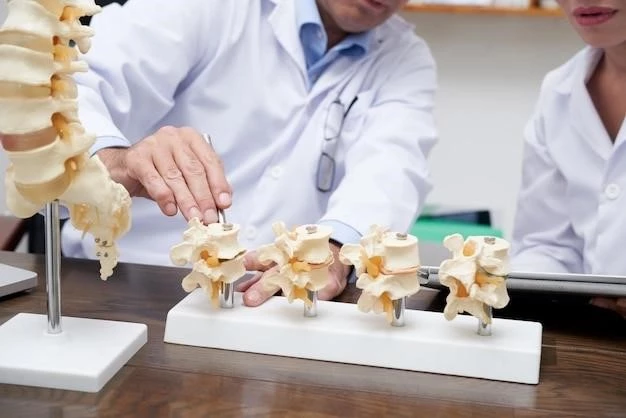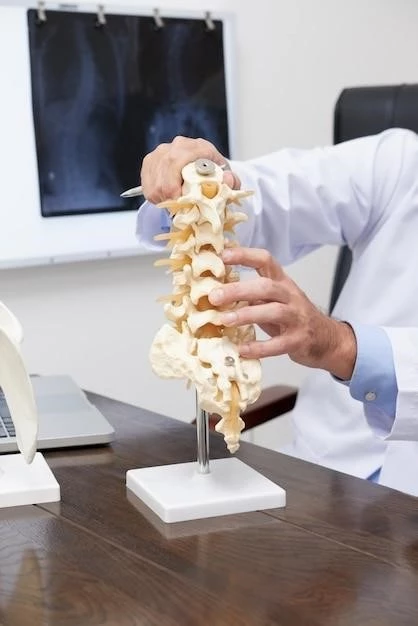Article Plan⁚ Disease ⎯ Spondylometaphyseal Dysplasia, Corner Fracture Type
Introduction to Spondylometaphyseal Dysplasia, Corner Fracture Type (SMDCF)
Spondylometaphyseal Dysplasia, Corner Fracture Type (SMDCF) is a skeletal dysplasia characterized by short stature and a waddling gait in early childhood. This condition presents unique radiographic features like corner fracture-like lesions in the metaphyses. Genetic studies point to it being heritable, often leading to early diagnosis. The impact on a patient’s quality of life stems from the physical challenges it poses. Management involves orthopedic interventions and treatment tailored to individual needs.
Clinical Characteristics of SMDCF
Spondylometaphyseal Dysplasia, Corner Fracture Type (SMDCF) is a skeletal dysplasia characterized by short stature, often noticeable in early childhood. Children with SMDCF may exhibit a distinct waddling gait, short limbs, and a short trunk. Radiographically, the condition is associated with corner fracture-like lesions in the metaphyses of bones, particularly in areas like the distal tibia, ulnar aspect of the distal radius, and proximal humerus. Developmental coxa vara, a hip deformity, is common and may lead to significant disability.
Individuals with SMDCF may present with metaphyseal irregularities that resemble fractures, causing challenges in diagnosis. The skeletal abnormalities in SMDCF may result in a progressive hip deformity necessitating surgical correction to improve quality of life. This rare condition, while presenting with unique imaging features, falls within a spectrum of rare bone dysplasias affecting both the spine and long bones.
Evaluating clinical features along with radiographic findings is crucial for accurate diagnosis and management of SMDCF. The impact of SMDCF on individuals can vary, with some experiencing mild short stature and others facing more significant physical limitations. Understanding the clinical characteristics of SMDCF is essential for providing appropriate care and support to individuals living with this skeletal dysplasia.
Radiographic Features of SMDCF

Spondylometaphyseal Dysplasia, Corner Fracture Type (SMDCF) is characterized by distinct radiographic features, including corner fracture-like lesions in the metaphyses of bones such as the distal tibia, ulnar aspect of the distal radius, and proximal humerus. These lesions can resemble fractures, posing challenges in diagnosis. Developmental coxa vara, a hip deformity, and metaphyseal irregularities are common findings on imaging studies. The presence of these unique radiographic features plays a crucial role in distinguishing SMDCF from other skeletal dysplasias and guiding appropriate management strategies.

Genetic Basis of Spondylometaphyseal Dysplasia
Spondylometaphyseal Dysplasia, Corner Fracture Type (SMDCF) has a genetic basis that is dominantly heritable. This rare skeletal dysplasia is associated with specific mutations, affecting the normal development of bones and resulting in unique radiographic features such as corner fracture-like lesions. The identification of genetic mutations linked to SMDCF assists in diagnosing the condition early, providing important information for personalized management and treatment approaches tailored to individual patients.
Unique Imaging Features of Spondylometaphyseal Dysplasia, Corner Fracture Type
The unique imaging features of Spondylometaphyseal Dysplasia, Corner Fracture Type (SMDCF) include corner fracture-like lesions in the metaphyses of bones like the distal tibia, ulnar aspect of the distal radius, and proximal humerus. These lesions resemble fractures and are distinct radiographic markers for SMDCF. The condition may also present with developmental coxa vara, a hip deformity, contributing to the diagnostic criteria for this rare skeletal dysplasia. Additionally, the presence of metaphyseal irregularities that mimic fractures underscores the importance of accurate imaging for diagnosis and management of individuals with SMDCF.
Differential Diagnoses and Overlap with Other Skeletal Dysplasias
When diagnosing Spondylometaphyseal Dysplasia, Corner Fracture Type (SMDCF), clinicians must consider differential diagnoses to distinguish it from other skeletal dysplasias with overlapping features. Conditions such as various types of spondylometaphyseal dysplasias and non-accidental injuries may present with similarities, highlighting the importance of accurate diagnostic criteria and detailed imaging assessments. Understanding the distinct radiographic features of SMDCF, like corner fracture-like lesions, aids in differentiating it from related skeletal dysplasias and guiding appropriate treatment strategies.
Management and Treatment Approaches for SMDCF
The management of Spondylometaphyseal Dysplasia, Corner Fracture Type (SMDCF) involves a multidisciplinary approach tailored to the individual’s needs. Treatment focuses on addressing the orthopedic challenges associated with short stature, developmental coxa vara, and other skeletal abnormalities. Surgical interventions may be necessary to correct progressive hip deformities and improve overall quality of life. Orthopedic specialists play a key role in managing SMDCF, providing surgical options and ongoing monitoring to address the unique skeletal characteristics and ensure optimal outcomes.
Impact on Patients’ Quality of Life
Spondylometaphyseal Dysplasia, Corner Fracture Type (SMDCF) can significantly impact the quality of life of affected individuals. The skeletal dysplasia, characterized by short stature and developmental coxa vara, may present challenges in mobility and bone development. The physical manifestations, such as short limbs and a waddling gait, can affect daily activities and may require adaptive measures for mobility and comfort. The progressive hip deformity and metaphyseal irregularities further contribute to the complexities faced by individuals with SMDCF, highlighting the importance of tailored treatment approaches to address both the physical and emotional well-being of patients.
Research Studies and Case Reports on SMDCF
Recent research studies and case reports have focused on Spondylometaphyseal Dysplasia, Corner Fracture Type (SMDCF) to expand our understanding of this rare skeletal dysplasia. These studies delve into the unique radiographic features, such as corner fracture-like lesions, which aid in accurate diagnosis and differentiation from other bone dysplasias. Additionally, case reports highlight the clinical manifestations, genetic underpinnings, and management strategies, providing valuable insights for healthcare professionals managing individuals with SMDCF.
Support Organizations and Resources for Individuals with SMDCF
For individuals and families affected by Spondylometaphyseal Dysplasia, Corner Fracture Type (SMDCF), seeking support organizations and resources can provide essential assistance. Rare Disease Day at the National Institutes of Health (NIH) offers a platform for connecting with experts and finding valuable information. Additionally, organizations may maintain lists of experts or expert centers specializing in SMDCF care, offering guidance and support to enhance the quality of life for those impacted by this skeletal dysplasia.
Recent Advances in Understanding SMDCF
Recent research and case reports have shed light on Spondylometaphyseal Dysplasia, Corner Fracture Type (SMDCF), furthering our comprehension of this rare skeletal condition. These advances have highlighted the unique radiographic features, such as corner fracture-like lesions, aiding in accurate diagnosis and differentiation from other bone dysplasias. Moreover, these insights have deepened our understanding of the genetic and clinical aspects of SMDCF, paving the way for more targeted and personalized treatment approaches for individuals affected by this condition.
Prognosis and Long-Term Outcomes in SMDCF
The prognosis and long-term outcomes for individuals with Spondylometaphyseal Dysplasia, Corner Fracture Type (SMDCF) vary depending on the severity of skeletal manifestations and the individual’s response to management strategies. Early detection and tailored treatment approaches, including surgical interventions for progressive hip deformities, can improve quality of life and functional outcomes. Regular follow-up care and monitoring are essential to address any evolving orthopedic issues and ensure optimal long-term prognosis for individuals living with SMDCF.
Conclusion and Future Directions in Research on Spondylometaphyseal Dysplasia
In conclusion, ongoing research on Spondylometaphyseal Dysplasia, Corner Fracture Type (SMDCF) continues to enhance our knowledge of this rare skeletal dysplasia, leading to improved diagnostic accuracy and treatment outcomes. The identification of unique radiographic features, genetic mutations, and clinical manifestations has paved the way for personalized management strategies tailored to individual patients. Future research directions may focus on further understanding the molecular mechanisms underlying SMDCF, exploring novel treatment modalities, and expanding support resources for individuals and families affected by this condition.
